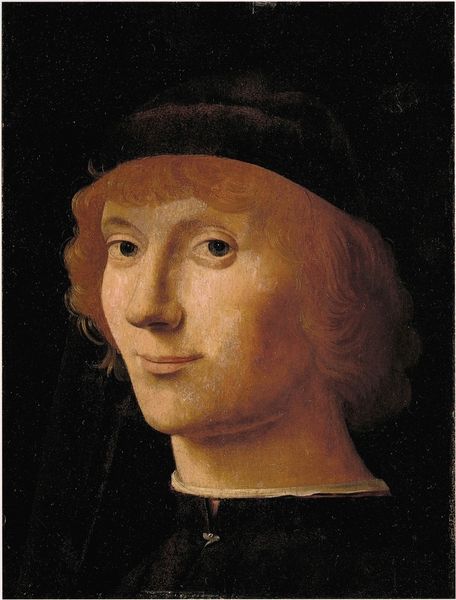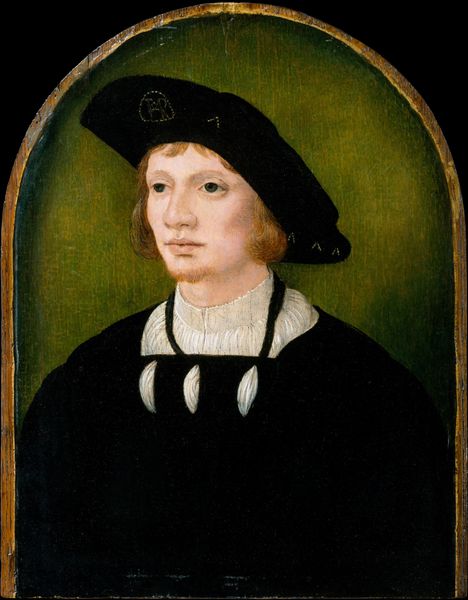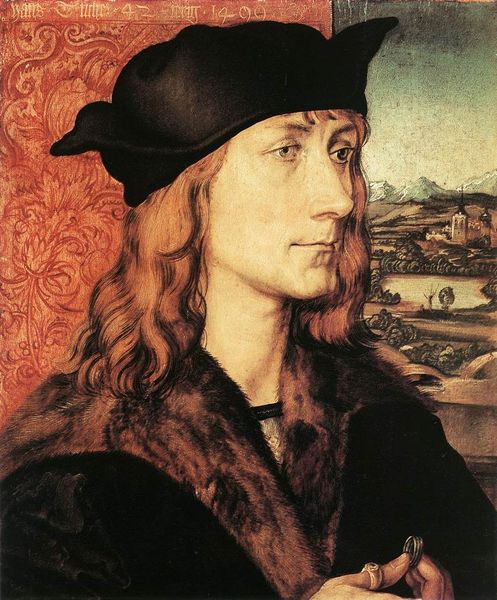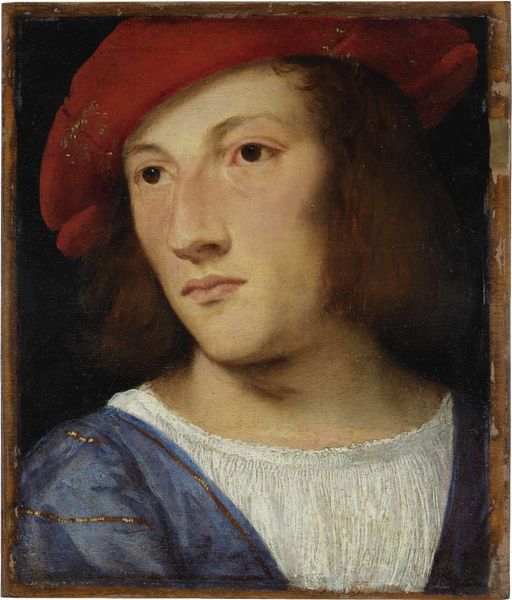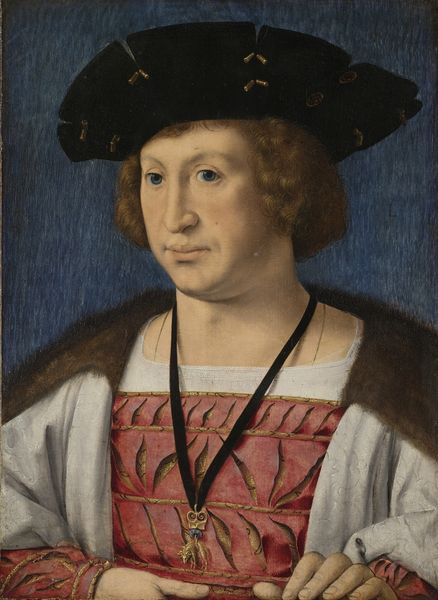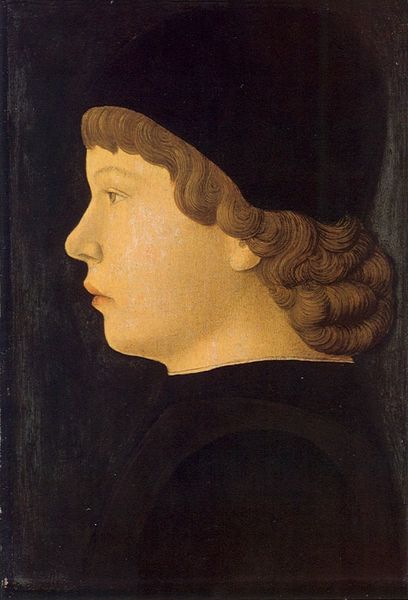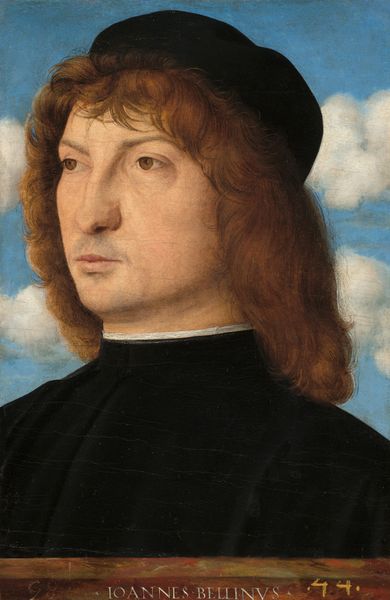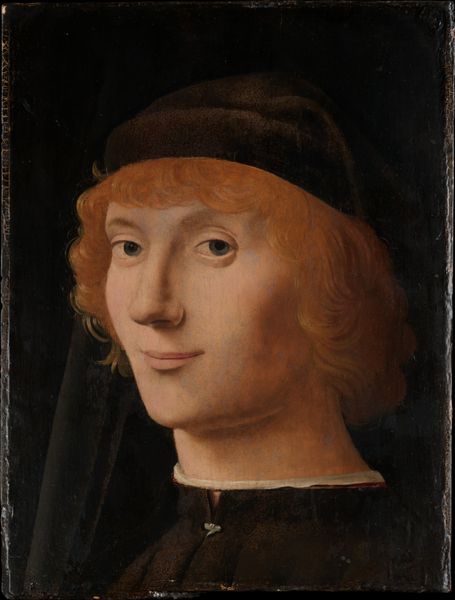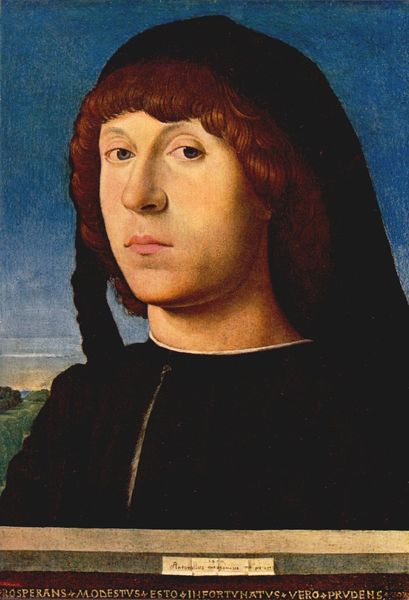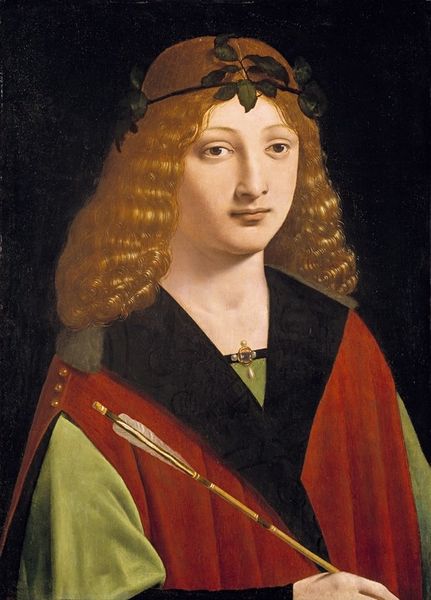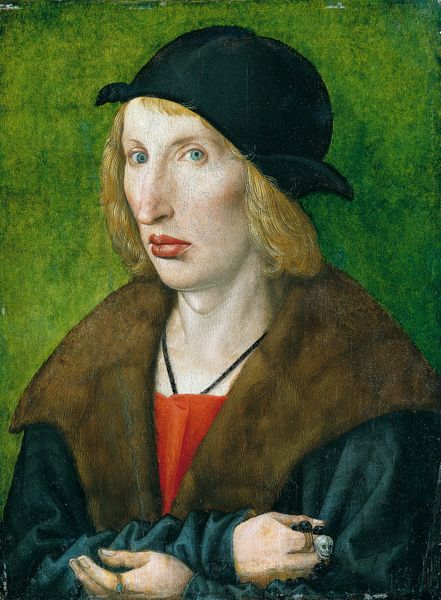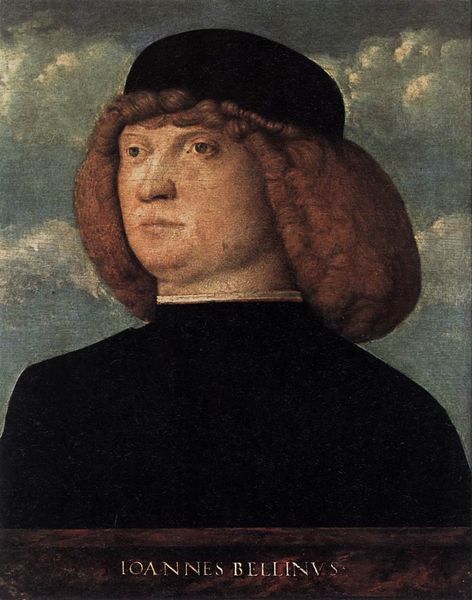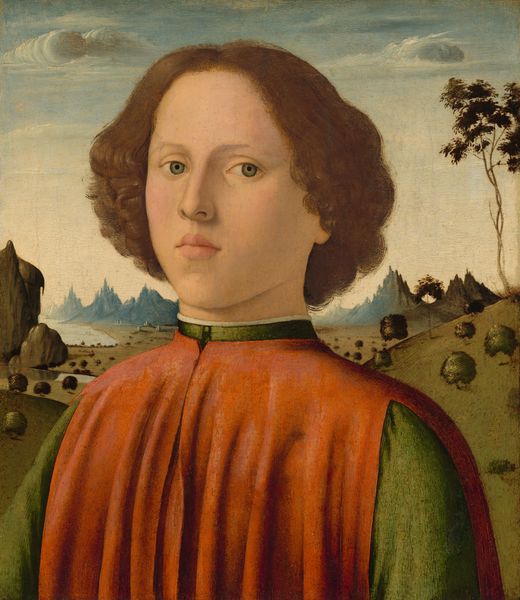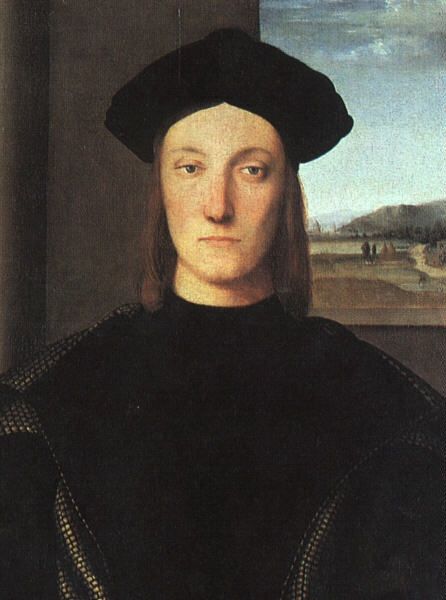
painting, oil-paint
#
portrait
#
character portrait
#
head
#
face
#
painting
#
oil-paint
#
figuration
#
11_renaissance
#
portrait reference
#
portrait head and shoulder
#
animal drawing portrait
#
nose
#
portrait drawing
#
facial portrait
#
academic-art
#
italian-renaissance
#
portrait art
#
fine art portrait
#
celebrity portrait
#
digital portrait
Dimensions: 26.7 x 38 cm
Copyright: Public domain
Art Historian: Here we have "Portrait of a Young Man," attributed to Francesco Botticini, rendered with oil paints. Curator: My eye is immediately drawn to the young man's face in profile; there's a striking contrast between his pale complexion and the somber background. Also, the painting itself feels...refined. Art Historian: Refined, indeed. Profiles were quite common in Renaissance portraiture. This specific viewpoint offers the artist a canvas to explore virtue and moral character through subtle indicators. Note how his gaze extends just past us and the gentle yet resolute line of his nose. Curator: But isn’t that pose also strategic for painters? Profiling hides potential imperfections while still showcasing features deemed beautiful by the time's standards. How laborious must this have been? Look at those detailed curls – must’ve required a small brush and steady hand! I wonder if apprentices assisted with background sections… Art Historian: Ah, a close examination of craft and production is a fascinating angle to take! However, returning to those curls: their arrangement reminds one of a laurel wreath, historically an emblem of accomplishment and nobility. The choice in attire, predominantly dark, concentrates our awareness to the inner essence. Curator: True, but those colors can also denote sumptuary laws or the available pigments of the period! What's being worn may say something concerning the access to particular textiles, and the wealth represented in having your portrait composed. Botticini clearly made deliberate decisions in materials that have socioeconomic impact written all over it. Art Historian: You are absolutely correct, although sometimes that economic impact becomes the emblem that society seeks. He isn't idealized as a divine hero, but like many of the Florentine likenesses of that time he is an emerging, aspirational model, gazing forward. It is a reflection of rising aspirations, new economies and ways of imagining one's legacy. Curator: Well, it leaves me with this question: will that legacy outlast the canvas and pigments that made it possible? After looking at this painting, I am intrigued to learn further about those early paint-making practices during the Italian Renaissance. Art Historian: For me, this Renaissance face carries echoes through art history to us today—how we aspire to be seen. This image encapsulates a transitional time, balancing established symbols and blossoming individuality.
Comments
No comments
Be the first to comment and join the conversation on the ultimate creative platform.
